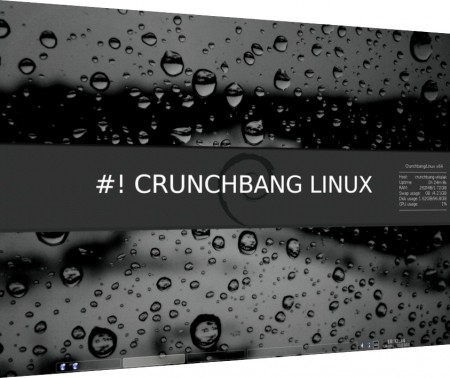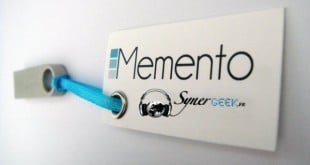 Voici les sources ayant servi à la rédaction d’un article publié dans le magazine Linux+ de Juillet/Août 2008.
Voici les sources ayant servi à la rédaction d’un article publié dans le magazine Linux+ de Juillet/Août 2008.
” On ne présente plus Ubuntu (http://www.ubuntu-fr.org) : la distribution qui a mis Linux à la portée du grand public ! En quelques années, elle est devenue la star des install-party car, comme elle est très riche en pilotes matériels, elle fonctionne instantanément sur une grande variété de PC.
Elle inclue également un grand nombre d’assistants logiciels qui facilite grandement l’installation et la prise en main par les débutants.
Ubuntu toujours tenu de pari de mettre sur un CDROM toutes les logiciels qu’un utilisateur issu du monde Windows peut s’attendre à trouver. Enfin, pour les plus hésitants, le même CDROM peut être utilisé en version LiveCD c’est-à-dire que l’on peut utiliser Ubuntu sans avoir à installer quoi que ce soit sur son PC.
Enfin, Ubuntu est gratuite et il existe une immense communauté d’utilisateurs près à s’entraider. Pour toutes ces raisons, cette distribution est devenue en quelques années seulement une référence du monde Linux et du logiciel libre!
Dans la pratique, le curieux qui s’apprête à installer sa première distribution Linux le fait souvent sur un vieux PC : celui devenu trop lent pour faire tourner la dernière version de Windows. Et comme, il n’y a pas de miracle dans le monde logiciel, une fois la période de découverte passée, le newbie va trouver qu’au fond Ubuntu, sur un PC dépassé, ça rame aussi un peu !
Bien souvent, cela est dû à un manque de mémoire vive. En effet, une interface graphique sophistiquée avec assistants et effets 3D, des milliers de pilotes matériels, cela consomme beaucoup de mémoire! En effet, il faut compter environ 160Mo de RAM pour charger Ubuntu.
Inévitablement, le linuxien désormais convaincu va soit acheter un nouveau PC, soit entamer une longue quête qui va l’amener à cherche la distribution idéale pour son usage et son matériel. Bien vite, il va découvrir des centaines de versions de Linux; certaines optimisées pour fonctionner sur de très petites configurations PC. Certains iront même jusqu’à concevoir leur propre version de Linux et deviendrons de vrai « geek ».
Linux est construit autour de briques OpenSource. Aussi, il est tout à fait possible de n’installer que les fonctionnalités qui vous intéressent et ainsi arriver à un système extrêmement optimisé car totalement personnalisé. Cette démarche est très intéressante et gratifiante mais elle est requière beaucoup d’investissement de temps personnel. Et pour revenir à Ubuntu, c’est vrai qu’un CDROM permettant d’installer une distribution fonctionnelle en 20 minutes, c’est quand même très pratique!
Certes, il existe de alternatives légers à chaque application mais en terme de fonctionnalité, Abiword, par exemple, ne peut pas rivaliser avec le poids lourd : OpenOffice.
Aussi, certains utilisateurs d’Ubuntu ont choisi de chercher à optimiser cette distribution pour de « petites » machines.
Un axe de travail très rapidement exploitable pour réduire la consommation mémoire d’Ubuntu est de choisir une autre interface graphique que Gnome. Il est vrai que Gnome est très ergonomique et intuitif (c’est d’ailleurs pour cela qu’il a été choisi) mais elle est aussi très gourmande en mémoire. Aussi, si vous vous sentez désormais suffisant confiants pour faire quelques compromis sur la convivialité de votre environnement de travail pour gagner en performances, je vous invite à regarder du coté de Xubuntu (http://www.xubuntu.org) et flubuntu (http://fluxbuntu.org) qui utilisent respectivement XFCE (http://www.xfce.org) et FluxBox (http://fluxbox.sourceforge.net).
 SynerGeek.fr Informatique & Veille Technologique
SynerGeek.fr Informatique & Veille Technologique

Raccourcis Clavier de OpenBox
Alt-F4
Close the active window
Alt-Space
Show the client menu for the active window
Alt-Tab
Cycle between windows on the desktop
Alt-Shift-Tab
Cycle between windows on the desktop in reverse order
Control-Alt-Tab
Cycle between panel and desktop windows on the desktop
Windows-D
Hide all windows to show the desktop
Windows-E
Run the Konqueror file manager (This is an example of how to run a program with a key binding)
Alt-Escape
Lower the active window behind other windows, and activate the last window that was in use
Windows-F1
Go to the first desktop instantly
Windows-F2
Go to the second desktop instantly
Windows-F3
Go to the third desktop instantly
Windows-F4
Go to the fourth desktop instantly
Control-Alt-Left
Open the desktop switching dialog, to go to the desktop to the left of the current one
Control-Alt-Right
Open the desktop switching dialog, to go to the desktop to the right of the current one
Control-Alt-Up
Open the desktop switching dialog, to go to the desktop above the current one (This will only be useful if you use a pager to set up a desktop layout with multiple rows)
Control-Alt-Down
Open the desktop switching dialog, to go to the desktop below the current one (This will only be useful if you use a pager to set up a desktop layout with multiple rows)
Shift-Alt-Left
Open the desktop switching dialog, to go to the desktop to the left of the current one, and bring the active window with you
Shift-Alt-Right
Open the desktop switching dialog, to go to the desktop to the right of the current one, and bring the active window with you
Shift-Alt-Up
Open the desktop switching dialog, to go to the desktop above the current one, and bring the active window with you (This will only be useful if you use a pager to set up a desktop layout with multiple rows)
Shift-Alt-Down
Open the desktop switching dialog, to go to the desktop below the current one, and bring the active window with you (This will only be useful if you use a pager to set up a desktop layout with multiple rows)
Alt-Left mouse button
Move a window
Alt-Right mouse button
Resize a window. The window is resized towards the edge that the mouse is nearest to. So use Alt-Right mouse button in the top right corner of a window to resize that corner.
Alt-Scroll wheel
Change desktops forward and backward
Raccourcis Souris
Middle mouse button
Open a menu listing all your windows
Right mouse button
Open a menu for launching applications (You should customize this menu to your liking)
These may or may not be available if you use a program to give you icons on your desktop, depending on how it works.
Le nouveau LiveCD/Installer est ici:
http://crunchbang.net/pub/linux/crunchbang-8.10.01.i386.iso
Une nouvelle version de CrunchBang est dipo. Elle est basée sur la dernière version de Ubuntu 8.10 Intrepid Ibex
Les nouveautés de cette version sont:
* A new darker theme.
* Tablaunch removed (finally).
* Some additional default shortcut keys added, including main menu.
* OpenOffice.org replaced by Abiword and Gnumeric.
* pypanal replaced by lxpanel.
* AcidRip removed.
* Gwibber replaces Twitux.
* GPicView replaces Mirage.
* VLC removed in favour of Totem — VLC is now a non GTK+ app 🙁
* etc.
Download the script with the following command:
wget http://crunchbang.org/misc/crunchbang-installer-8.10.01.sh